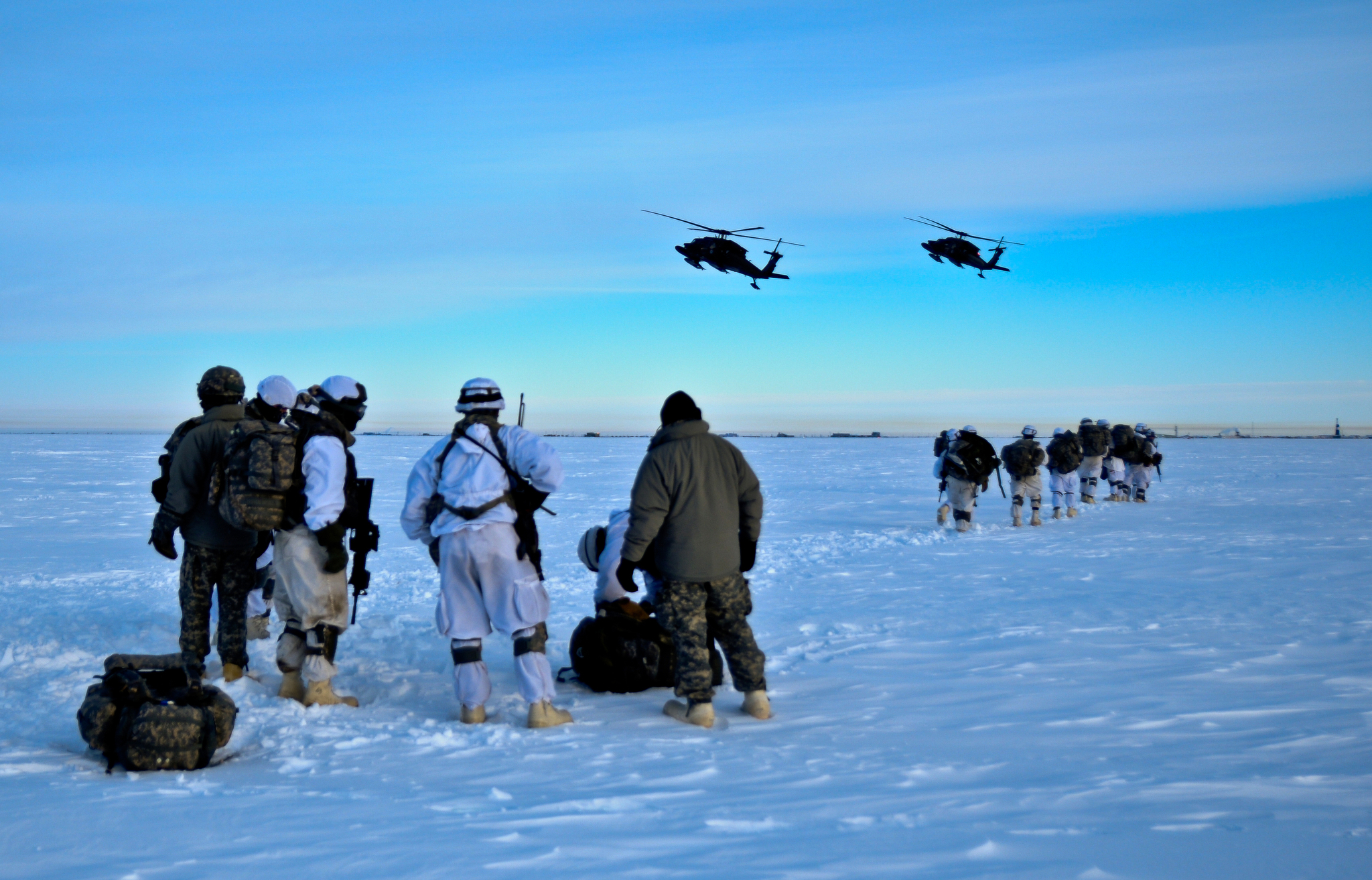A new U.S. Defense Department Arctic Strategy sees growing uncertainty and tension in the region
The new document emphasizes competition from Russia and China — and doesn't mention climate change.

The United States’ new Department of Defense (DoD) Arctic Strategy sees developments in the region as increasingly uncertain with “deepening and intensifying problematic strategic trends.” While it explains that there are many positive and cooperative tendencies in the Arctic, the new strategy highlights that the Arctic’s security environment is complex and that the region is in an “era of strategic competition.”
In contrast to previous Arctic strategy documents the U.S. now sees the region as a corridor between the Indo-Pacific and European theaters of strategic engagement and explains that it is “an avenue for great power competition and aggression.”
The document continues the U.S.’ approach of singling out Russian and especially Chinese activity in the region — most recently by Secretary of State Pompeo at the Arctic Council Ministerial Meeting in Rovaniemi last month. While previous Arctic documents made little mention of China, the country’s activities receive special attention in the updated strategy.
“While expected, the starkest departure from the previous Obama-era Arctic defense strategy is the increased focus on China as a strategic competitor in the Arctic. Whereas the 2016 document only acknowledged China as one of the dozen Arctic Council Observers States, this new strategy includes over 20 direct references to China’s activities and growing influence in the Arctic,” explains Ryan Uljua, senior fellow at The Arctic Institute.
A focus on China
The document points out that civilian Chinese research efforts may in fact help to strengthen the country’s military activities in the Arctic Ocean in the future. China’s recent efforts to design and construct a nuclear-powered science icebreaker may in fact serve as a technology test bed for nuclear aircraft carriers in the future.
The U.S. also criticizes China’s efforts to undermine the region’s rules and norms and expresses concern that the country’s aggressive economic behavior seen elsewhere in the world may be repeated in the Arctic. “Notably, the Pentagon’s strategy focuses on China’s use of strategic investments to gain economic leverage in the region as well as its attempts to influence Arctic governance,” explains Uljua.
The document also rebukes China’s claims as a near-Arctic state on several occasions, stating that “The United States does not recognize any other claims to Arctic status by any State other than these eight nations” and “Despite China’s claim of being a ‘Near Arctic State,’ the United States does not recognize any such status.”
The strategy further elaborates on China’ interests in the Arctic. “Despite having no territorial claims in the region, China is seeking a role in Arctic governance. As part of China’s “One Belt, One Road” initiative, it has linked its economic activities in the Arctic to its broader strategic objectives.”
Criticizing Russia’s activities
In the strategy the U.S. acknowledges that Russia operates the largest military presence above the Arctic Circle and points to the country’s concerted efforts to establish new military bases and create a network off air defense coastal missile systems.
The document also criticizes Russia for violating international law with respect to regulating maritime traffic on its Northern Sea Route, including the reported threat of use of force against vessels in violation of Russian regulations.
In this respect the U.S. asserts that freedom of navigation and overflight remain essential to operating in the Arctic. Following in line with previous statements by U.S. military officials, the document reserves the right to challenge excessive maritime claims in the Arctic through freedom of navigation exercises.
Dual language on climate change
In contrast to previous Arctic policy documents, the strategy does not make any direct mention of climate change. The Department of Defense, however, indirectly acknowledges the impact of climate change on its operations in the Arctic and how a current lack of understanding of the climatic change in the region puts it at a disadvantage when planning future operational needs.
The document highlights how, for example, coastal erosion and permafrost thaw threatens Defense Department Arctic installations and how “understanding and predicting the physical environment is critical for meeting mission demands.”
Overall while the new strategy offers specific critiques of China and Russia, it presents few detailed insights on how the U.S. aims to increase its presence in the Arctic. Instead it uses generic phrasing such as “supporting resilient infrastructure”, “refining Arctic posture”, and “enabling domain awareness,” to describe the U.S.’ goals and highlights how “the U.S. Arctic deterrent will require agile, capable, and expeditionary forces with the ability to flexibly project power into and operate within the region.”